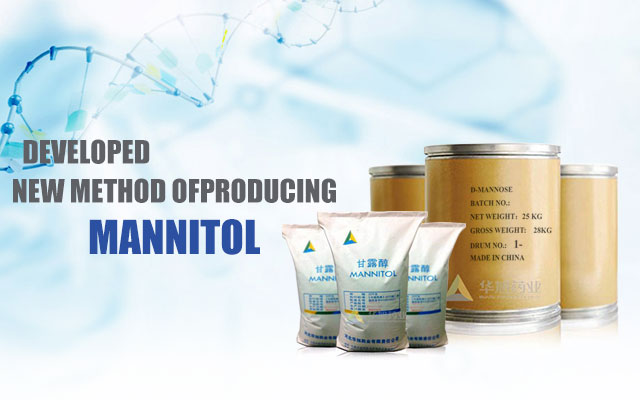Search
Tel: 0086-311-89105105/6/7/8 0086-311-89105199
Fax:0086-311-89105200
E-mail:Rongjj818@126.com mannose@hotmail.com
Add: No.33 industrial street,Econimic development zone,Shijiazhuang city,Hebei
Click on the classification tree
Unveiling the Role of Crystalline Fructose in Pharmaceutical Development
Classification:
Industry News
2025/06/19
[Abstract]:
Unveiling the Role of Crystalline Fructose in Pharmaceutical Development
Table of Contents
- Introduction to Crystalline Fructose in Pharmaceuticals
- Unique Properties of Crystalline Fructose
- Benefits of Using Crystalline Fructose in Drug Formulations
- Applications of Crystalline Fructose in Pharmaceutical Development
- Formulation Challenges and Solutions
- Regulatory Aspects of Crystalline Fructose
- Future Trends in Crystalline Fructose Research
- Conclusion
- FAQs about Crystalline Fructose in Pharmaceuticals
Introduction to Crystalline Fructose in Pharmaceuticals
Crystalline fructose is a widely recognized sugar, primarily derived from corn. Its unique crystalline structure differentiates it from other sweeteners, making it a valuable ingredient in various sectors, particularly in pharmaceuticals. As we delve into the role of crystalline fructose in pharmaceutical development, it becomes clear that its applications extend beyond mere sweetness; it serves critical roles in enhancing drug stability, improving taste, and optimizing bioavailability.
Unique Properties of Crystalline Fructose
When discussing the significance of crystalline fructose, we must first acknowledge its **unique properties** that make it particularly suited for pharmaceutical applications.
1. Solubility
Crystalline fructose boasts a higher solubility compared to traditional sugars. This property is crucial when formulating liquid medications where rapid dissolution is necessary for effective drug delivery.
2. Low Glycemic Index
With a low glycemic index, crystalline fructose does not spike blood sugar levels as dramatically as glucose, making it a favorable choice for patients with diabetes.
3. Sweetness Profile
Crystalline fructose is approximately 1.5 times sweeter than sucrose, allowing for reduced quantities in formulations, which can minimize the caloric content of products.
4. Stability
The stability of crystalline fructose under varying environmental conditions enhances the shelf life of pharmaceutical products, ensuring therapeutic efficacy over time.
Benefits of Using Crystalline Fructose in Drug Formulations
The incorporation of crystalline fructose into pharmaceutical formulations presents numerous advantages that can significantly impact drug development.
1. Improved Taste Masking
Crystalline fructose is an effective sweetener, often employed to **mask the unpleasant taste** of certain medications. This characteristic can enhance patient compliance, particularly among children and those sensitive to bitter flavors.
2. Enhanced Bioavailability
Studies indicate that crystalline fructose can improve the **bioavailability** of poorly soluble drugs by promoting solubility and absorption, thereby increasing therapeutic effectiveness.
3. Cost-Effectiveness
Utilizing crystalline fructose can lead to cost savings in the production of pharmaceutical products. Its sweetening efficiency allows for reduced amounts needed in formulations, ultimately lowering manufacturing costs.
4. Versatility in Formulation
Crystalline fructose can be utilized across various dosage forms, including tablets, capsules, and liquids, highlighting its versatility in pharmaceutical development.
Applications of Crystalline Fructose in Pharmaceutical Development
The applications of crystalline fructose in pharmaceuticals are vast and varied. Here are some of the most notable:
1. Oral Medications
In oral solid dosage forms, crystalline fructose can be employed as an excipient to improve **taste**, enhance solubility, and provide bulk.
2. Liquid Formulations
In **liquid pharmaceuticals**, crystalline fructose is often used not only for sweetness but also to stabilize active ingredients, improving overall product quality.
3. Nutraceuticals
Crystalline fructose finds its place in nutraceutical products, where it serves as a functional ingredient, contributing to both flavor and health benefits.
4. Pediatrics and Geriatric Medicine
Its sweetening properties make crystalline fructose particularly beneficial in pediatric formulations, where palatable medications are crucial for adherence. Similarly, it can enhance medication acceptance among the elderly.
Formulation Challenges and Solutions
Despite its advantages, there are challenges associated with using crystalline fructose in pharmaceutical formulations.
1. Crystallization Issues
One common challenge is the **tendency of crystalline fructose to crystallize** in certain formulations, which can affect product quality. Careful formulation strategies and the use of stabilizers can help mitigate this issue.
2. Regulatory Compliance
Navigating regulatory requirements can be daunting. Adhering to guidelines set by agencies like the FDA ensures that formulations meet safety and efficacy standards.
3. Compatibility with Active Ingredients
It's essential to assess the compatibility of crystalline fructose with active pharmaceutical ingredients (APIs) to prevent degradation or reduced efficacy. Conducting thorough compatibility studies during the formulation process is vital.
Regulatory Aspects of Crystalline Fructose
Understanding the regulatory landscape surrounding crystalline fructose is crucial for pharmaceutical companies. Regulatory bodies like the FDA and EMA have specific guidelines concerning the use of excipients in drug formulations.
1. GRAS Status
Crystalline fructose holds Generally Recognized as Safe (GRAS) status, which facilitates its use in food and pharmaceutical applications.
2. Labeling Requirements
Proper labeling of products containing crystalline fructose is essential for compliance with regulatory standards, ensuring that consumers are informed about the ingredients in their medications.
Future Trends in Crystalline Fructose Research
As research progresses, the potential applications of crystalline fructose in pharmaceuticals are expected to expand.
1. Innovative Drug Delivery Systems
Future studies may focus on harnessing crystalline fructose in advanced drug delivery systems, such as nanoparticles or liposomes, which could enhance the **targeted delivery** of medications.
2. Biodegradable Options
With increasing interest in sustainable pharmaceuticals, exploring biodegradable forms of crystalline fructose could lead to more eco-friendly formulations.
3. Personalized Medicine
The role of crystalline fructose in personalized medicine is another area ripe for exploration, particularly in tailoring formulations to meet individual patient needs based on their metabolic responses.
Conclusion
Crystalline fructose is emerging as a pivotal component in pharmaceutical development, offering unique properties and numerous benefits that enhance drug formulations. Its ability to improve taste, bioavailability, and stability positions it as a valuable excipient in various applications. As the pharmaceutical landscape evolves, the future of crystalline fructose appears promising, with ongoing research likely to unveil new possibilities in drug delivery systems and formulations tailored for patient needs. The strategic incorporation of crystalline fructose not only enhances the efficacy of medications but also fosters improved patient compliance, ultimately contributing to better health outcomes.
FAQs about Crystalline Fructose in Pharmaceuticals
1. What is crystalline fructose?
Crystalline fructose is a natural sugar derived from corn, known for its sweetening properties and unique crystalline structure.
2. How does crystalline fructose improve drug formulations?
It enhances taste, increases solubility, improves bioavailability, and can stabilize active ingredients in pharmaceutical products.
3. Is crystalline fructose safe for all patients?
Crystalline fructose is considered safe for most patients, including those with diabetes, due to its low glycemic index, but always consult a healthcare provider for individual concerns.
4. What are the regulatory considerations for using crystalline fructose in pharmaceuticals?
Crystalline fructose has GRAS status, but companies must adhere to specific labeling and safety guidelines set by relevant regulatory bodies.
5. Are there any challenges in using crystalline fructose in drug formulations?
Yes, challenges include crystallization issues, compatibility with active ingredients, and navigating regulatory compliance, all of which require careful formulation strategies.



